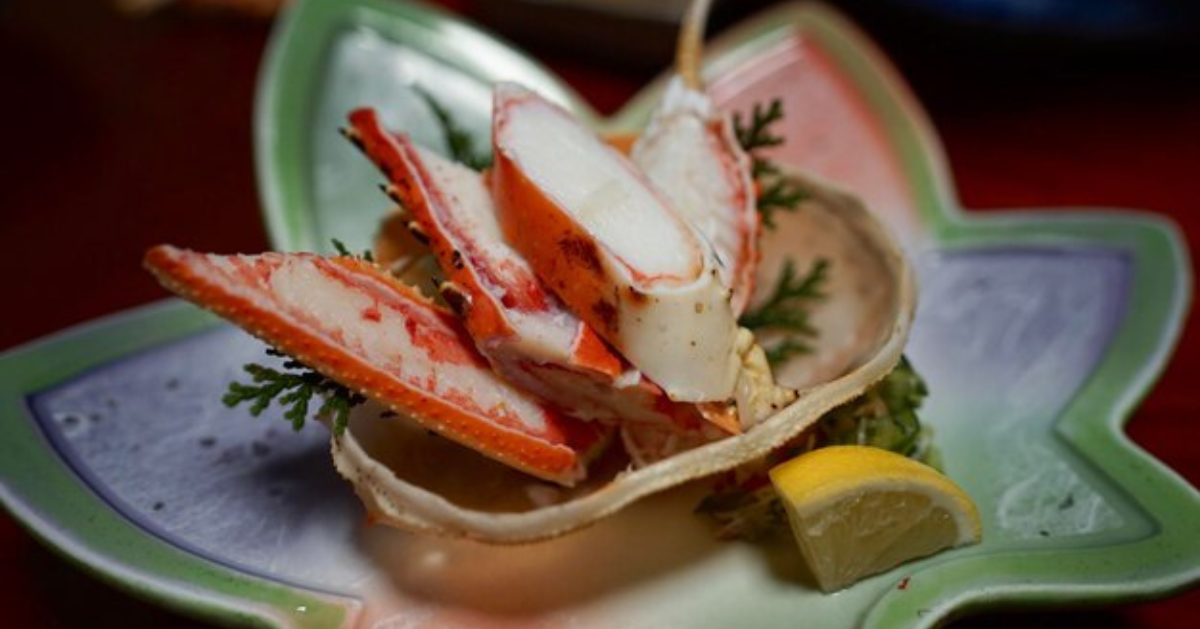Kanikama, often known as imitation crab, is a seafood product that cleverly mimics real crab meat. If you’ve ever enjoyed a California roll at a sushi restaurant, chances are you’ve had kanikama. Its popularity stems from its affordability, versatility, and remarkable similarity in taste and texture to real crab.
How is Kanikama Made?
Kanikama is crafted from surimi, a paste made by blending white fish, typically Alaskan pollock, with starch, egg whites, and seasoning. This mixture is shaped, colored, and flavored to resemble crab legs. The end result? A product that looks and tastes strikingly close to the real thing without the hefty price tag.
The Origins of Kanikama
Kanikama’s roots trace back to Japan in the 1970s, where it was developed as a cost-effective way to satisfy the demand for crab meat. Since then, its popularity has spread globally, making its way into everything from sushi rolls to salads and pasta dishes.
Nutritional Value of Kaniama
Kankama is low in fat and calories, making it a popular choice for health-conscious consumers. While it isn’t as nutrient-dense as real crab, it still provides protein and can be fortified with added nutrients like omega-3 fatty acids.
Kaniama vs. Real Crab: What’s the Difference?
Though similar in appearance and taste, kaniama and real crab differ significantly in composition. Kaniama is a processed food product, while real crab is naturally sourced. The price point is also a major differentiator—kaniama costs a fraction of what real crab does.
Common Uses for Kaniama in Cooking
Kaniama’s versatility makes it a star ingredient in a variety of dishes. It shines in sushi rolls, seafood salads, crab cakes, and even pasta recipes. Because it is pre-cooked, it’s easy to add to dishes with minimal preparation.
Why Restaurants Love Kaniama
For restaurants, kaniama offers consistency and cost savings. Unlike real crab, which can fluctuate in availability and price, kaniama is affordable and always in stock. This allows chefs to deliver quality dishes without breaking the bank.
Kankama in Sushi: The California Roll Staple
Kankama plays a vital role in the beloved California roll, one of the most popular sushi rolls in the world. Its sweet, mild flavor pairs perfectly with avocado and cucumber, creating a delightful taste experience that appeals to sushi novices and aficionados alike.
Is Kankama Safe to Eat?
Yes, kakama is safe to eat and undergoes strict quality control during manufacturing. It’s pasteurized and thoroughly cooked before packaging, reducing the risk of contamination. However, individuals with fish or egg allergies should check labels carefully.
Kankama for Vegetarians and Vegans
While kaikama isn’t vegetarian or vegan, plant-based alternatives are emerging. Made from ingredients like konjac or soy, these versions mimic the texture and flavor of kankama, catering to those following a plant-based diet.
Sustainability and Kankama Production
Kankama production can support sustainability by utilizing less popular fish species, reducing overfishing of high-demand seafood. Many manufacturers are turning to eco-friendly fishing practices to create kankama, contributing to more sustainable oceans.
Homemade Kankama Recipes
Want to experiment with kankama at home? Try adding it to homemade sushi rolls, poke bowls, or seafood salads. It’s an easy way to elevate simple dishes with a seafood twist.
Kanikama and Children’s Lunches
Kanikama is a great addition to children’s lunches. Its mild flavor and fun shape make it appealing to kids. Pack it in sushi rolls or as a snack with dipping sauces for a fun, nutritious treat.
The Future of Kanikama
As food technology advances, kanikama continues to evolve. New flavors, textures, and plant-based options are expanding its appeal, ensuring that this beloved seafood substitute remains a staple for years to come.
Conclusion
Kanikama is more than just imitation crab—it’s a versatile, affordable, and sustainable ingredient that has carved out a special place in kitchens around the world. Whether you’re enjoying it in sushi, salads, or snacks, kanikama offers a delicious alternative to real crab without compromising on flavor or texture.
FAQs
Is kanikama gluten-free?
It depends on the brand. Some kanikama contains wheat starch, so check the packaging for gluten-free options.
Can you eat kanikama raw?
Kanikama is pre-cooked, meaning it’s safe to eat straight from the package.
How long does kanikama last in the fridge?
Once opened, kanikama typically lasts about 3 days in the refrigerator.
Can kanikama be frozen?
Yes, you can freeze kanikama for up to three months without compromising its texture.
What’s the best way to cook with kanikama?
Add kanikama to salads, sushi rolls, or stir-fries for an instant seafood twist.

